Utah Biographies ~ Gemmell to Harkness
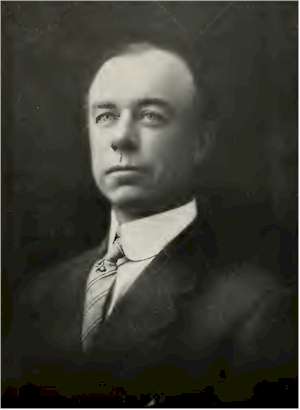
Gemmell, Robert Campbell
Among the mining engineers who have
achieved success and distinction in their chosen profession,
none stand out more conspicuously, nor have accomplished more in
real development work in this and other countries, than has
Robert Campbell Gemmell, resident of Salt Lake City and at
present occupying the important position of general
superintendent of the Utah Copper Company's interests in Utah.
Mr. Gemmell was born at Port Matilda, Pennsylvania, July 5,
1863, a son of Robert Brown and Anna Eliza Campbell Gemmell. The
elder Gemmell was a railroad man of prominence and was
superintendent of the telegraph service of the Atchison, Topeka
& Santa Fe Railroad, and as a youth was employed by the
Pennsylvania Railroad, in the service of the late Thomas Scott.
R. C. Gemmell finished his education at the University of
Michigan, from which institution he received two degrees, one of
Bachelor of Science in civil engineering in 1884, and the other
of Civil Engineer in 1895. From 1884 until 1890, Mr. Gemmell was
employed in the engineering department of the A. T. & S. F.
Railroad, surveying and constructing some of its branch railway
lines. From 1890 until the summer of 1893 he was engaged in the
practice of hydraulic and mining engineering in the Northwest,
in the States of Oregon, Washington, and Idaho. Mr. Gemmell came
to Salt Lake City in November, 1893, and since then has been
actively identified in the mining world and its development.
Mr. Gemmell was engineer for Captain De La Mar from 1896 until
1901, having charge of his engineering work in a general way,
and making examinations of properties in various parts of the
country. In 1901 Mr. Gemmell went to Mexico as general manager
of the Mexican Mining Syndicate and during his stay there
examined and developed a number of mining properties, remaining
with that company for about two years. He was then employed by
the Guggenheim Exploration Company, and examined and developed
some of their properties in Mexico during the following two
years. In 1905 Mr. Gemmell's services were retained by a New
York syndicate of capitalists, and he was sent to Spain for the
purpose of examining some gold mining properties in their
interests. Mr. Gemmell then returned to Salt Lake City, and on
January 1,1906, assumed the position he now occupies as general
superintendent of the Utah Copper Company.
Mr. Gemmell was a member of the city council of Salt Lake City,
and was for two terms, from 1898 to 1901, inclusive, State
engineer of Utah. He is a member of the Alta Club and the
Country Club of Salt Lake City, Utah; also of the American
Society of Civil Engineers, the American Institute of Mining
Engineers, and the Mining and Metallurgical Society of America.
Mr. Gemmell was married October 17, 1888, to Miss Belle E.
Anderson, and they reside at the Bransford apartments, Salt Lake
City.
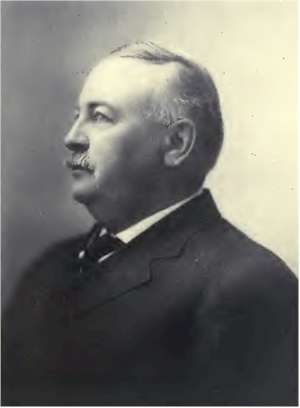
Gridley, F. P.
F. P.
Gridley, general manager of the Central Coal & Coke Company, one
of the largest concerns of its kind in the United States, is a
resident of Salt Lake City and represents the extensive
interests there of the above corporation.
Mr. Gridley was born at Parkman,
Ohio, April 10th, 1854, but immediately afterward his parents
removed to Cleveland, Ohio, where young Gridley resided until he
was twelve years of age. In 1865 his father, James U. Gridley,
became interested in the West and removed with his family to
Omaha, Nebraska, where he engaged in the business of freighting
and cattle. Here Mr. Gridley remained until 1893 when he came to
Utah and has been actively engaged in business here ever since.
On March 27th, 1895, Mr. Gridley was married to Miss Kate
Russell, a native of Utah, at Ogden, and they have two children,
Jack and Katherine, and reside at 255 Sixth East Street.
Mr. Gridley is a member of the Alta
Club of Salt Lake City, and also of the Benevolent Protective
Order of Elks.
The Central Coal & Coke Company,
which is incorporated under the laws of Missouri, with general
headquarters at Kansas City, is officered as follows: Chas. S.
Keith, president and general manager; Chas. Campbell,
vice-president; J. C. Sherwood, vice-president and general
auditor; E. E. Riley, treasurer. It operates upwards of forty
coal mines in the States of Kansas, Missouri, Arkansas,
Oklahoma, and Wyoming; and also several large saw mills in the
yellow pine districts of Louisiana and Texas. The total output
of the mines of this company for the last year was 2,500,000
tons, and of the mills 112,000,000 feet. The company owns in the
neighborhood of 175,000 acres of virgin timber land in the
yellow pine districts and 80,000 acres of cut-over land. The
total number of employees is about 7500, and the annual business
of the company will approximate $15,000,000.
The Wyoming mines owned by the
Central Coal & Coke Company are located at Rock Springs, where
they mine their well-known "Pea-cock" Rock Springs coal, which
is the ranking coal in the western market. This coal is
distributed from the Missouri River to the Pacific Coast and
throughout the States of Kansas, Nebraska, South Dakota,
Wyoming, Utah, Nevada, California, Oregon, Washington, Montana
and Idaho, where it is used very extensively for domestic,
mining, smelting and steam purposes.
This company has also been operating
for several years in Salt Lake City a large retail yard, where
they have handled their own product and built up a very
extensive business.
The general western manager of the
Central Coal & Coke Company is Mr. F. P. Gridley, with offices
at No. 38 South Main Street, Salt Lake City, from which the
operations of the mines are directed and the general wholesale
and retail business handled.
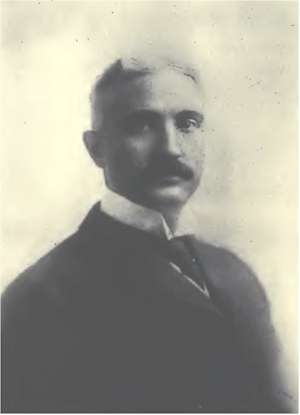
Hagenbarth, Francis J.
Francis J.
Hagenbarth is of Austrian ancestry, in which country his
grandfather on his maternal side was one of the imperial judges
of the city of Vienna and prominent in the professional circles
there. His paternal grandfather was also prominently identified
in business and was a successful brewer, and this industry his
son, father of Frank J., took up and located in the
inter-mountain country, having a very extensive business in
Denver, Virginia City, Salt Lake City, and throughout the
inter-mountain States. He settled first in Wisconsin in 1859,
the possibilities of which State were at that time attracting
the attention of men who had the courage to brave the hardships
and privations of pioneer life and the intelligence to foresee
the promising future of a section of our country so rich in
natural advantages. Having received a military training in his
native land, and being a man of patriotic impulses, Mr.
Hagenbarth, shortly after the breaking out of the Civil War, was
instrumental in raising a company for service on the Union side.
He served as captain of the Ninth Wisconsin Regiment of
Volunteers during the period of hostilities, and won honorable
distinction. He died at Loon Creek, Idaho, in 1870, and his
widow, Catherine Hagenbarth, subsequently married the late J. D.
Wood, who was an Idaho pioneer widely known, highly respected
and successful in the mining and live-stock business in the
inter-mountain region.
Francis J. Hagenbarth was born at
Leesburg, Lemhi County, Idaho, and was favored by a liberal
education by his step-father by whom he was much beloved. He
took a course in mining and engineering at Notre Dame University
in Indiana, and upon his graduating he entered the employ of the
Salmon River Smelting Company of Clayton, Idaho, as mining
engineer, and in 1897 he accepted a similar position at Custer,
Idaho.
The following year he left the mining
profession and entered the livestock business in Idaho and
Montana, in which industry he rapidly rose to a leading
position, becoming vice-president and general manager of the
Wood Live Stock Company. In 1902 he bought the Palomas Ranch in
Chihuahua and Sonora, Mexico, in association with J. D. and H.
C. Wood and W. S. McCornick, and organized the Wood-Hagenbarth
Cattle Company, owning 2,500,000 acres of land and about 37,000
head of cattle, and he was made vice-president and general
manager. In 1903 Mr. Hagenbarth was elected president of the
National Live Stock Association at Portland, Oregon, succeeding
Hon. John W. Springer, of Denver, and he was subsequently
re-elected in 1904 for a second term. Mr. Hagenbarth declined
the tendered honor of a re-election to that important office.
Mr. Hagenbarth took an active interest in protecting the wool
interests of Idaho during the discussion of the Wilson Tariff
Bill in 1892-1893, and has always been a moving spirit in all
the activities of his time, although he never occupied a
political position excepting the office of Labor Commissioner in
Idaho in 1903-4, and as a Presidential elector from Idaho in
1905.
He is a director of the Daly-West
Mining Company of Park City, president of the Yerington
Consolidated Copper Company, vice-president and member of the
Executive Committee of the Continental Life Insurance and
Investment Company, and president of the Western Securities
Company, of Salt Lake.
The Wood Live Stock Company is the
largest wool-growing company in the United States. It was this
company which originated the shipment of lambs in large
quantities from the Western ranges to the Eastern markets. It is
also the only company in this country which grades its wool on
the range on the Australian plan, so that the product goes
directly from the sheep's back into the woolen mills. The Wood
Live Stock Company installed the first plant in the United
States for the shearing of sheep by machinery and many
innovations in the handling of mutton were introduced by Mr.
Hagenbarth. The annual product of the Wood Live Stock Company is
upwards of $500.000. Mr. Hagenbarth is prominently and favorably
known in social life, as he is in the business world. He is a
member of the University, Alta, Country and Commercial Clubs of
Salt Lake City, and of the Athletic Association of Chicago,
Jonathan Club of Los Angeles, Toltec Club of El Paso, Texas, the
. M. C. A. of Salt Lake, and the Rocky Mountain Club of New
York.
He was married at Melrose, Montana,
to Miss Mary E. Browne, daughter of General James A. Browne, one
of" Montana's oldest pioneers. They have four children, Mary
Catherine, David, Catherine and Francis Hagenbarth.
At this time Mr. Hagenbarth is
president and manager of the Wood Live Stock Company, president
of the Wood-Hagenbarth Cattle Company, president of the J. D.
Wood Company, and vice-president and director of the . Union
Stock Yards, Portland, Oregon.
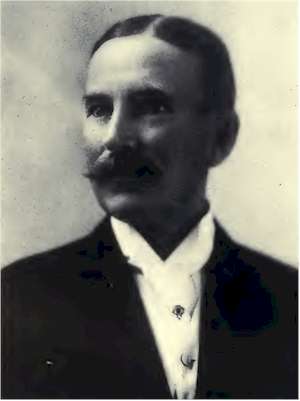
Halloran, William J.
It would be
difficult indeed to find a man embodying all the qualifications
of a good citizen, a gentleman and a business man more desirable
for a town or city than the subject of this sketch, William J.
Halloran. Having staked his chances in this city of Zion for
over twenty-two years, he has been before the public eye, and
that he to-day is looked upon by all who know him as one of the
first citizens of Salt Lake is due to his inherent ideas of
honesty and integrity, combined with his wonderful
resourcefulness and business acumen. A booster and plugger for
Salt Lake and her resources, he has become so prominent in the
growth and development of the city that nothing is ever
suggested and thought of concerning civic improvements or
aggrandizement that is not first submitted to this first citizen
of the City of Salt Lake.
Born in Detroit, Michigan, on the
25th day of November, 1859, his father was John Halloran, for
years with the Grand Trunk Railroad, in the freight department,
and his mother Bridget Halloran. He received his earlier
education in Sarnia, Ontario, Canada, his people having moved to
that town when he was a mere lad. The West always had charms for
him, and, although he had reached man's estate before he
responded to the call of this country, he came and located in
Salt Lake City in November, 1887.
Young, imbued with the never-give-up
spirit and chuck full of determination, he soon became a
prominent man in business circles of this city. He made friends
readily; and not only that, he kept them. Always energetic,
business opportunities came and he was at the door to meet them.
Today he is known by all classes for his shrewdness and methods
of fair dealing. He is interested in several companies,
prominent among them being the Halloran-Judge Company, of which
he is the senior partner, and which is one of the best-known
real estate firms in the city. He is also prominently identified
with the Merchants' Bank, the Utah Savings and Trust Company,
the Continental Life and Investment Company, the Studebaker
Bros. Company of Utah, and the Newhouse Hotel Company.
While not a politician in any sense
of the word, he is prominently identified with the American
party and its success, and for four years he was on the Board of
Public Works under this administration, and was an earnest and
conscientious worker for civic improvements. He is best known,
however, as president of the Commercial Club, now serving his
third term in that office. He has ever labored for the
perpetuity of this organization and it is needless to mention
the innumerable propositions which have been attempted and
accomplished by this organization and through the individuality
of its president. The most recent thing which has reflected
credit on the kind of men who are members of the organization
and who work hand in hand with its president, is the campaign
waged to raise the $150,000 for the Y. M. C. A. Nothing that he
has ever helped to accomplish gives him greater pleasure than
the building of the new six-story fire-proof Commercial Club
home, which is to be completed this year, at a cost of $300,000.
Although a very busy man with his
many business duties, he is very prominent in social and club
life. He is a member of the Alta Club, Knights of Columbus, Elks
Lodge, and also president of the Knights of Columbus Association
and the Knights of the Maccabees. His home life is an ideal one
and he enjoys spending his few unoccupied hours in the bosom of
his family. Married in 1883, in St. Clair, Michigan, his union
has been blessed with three children, namely, Ruel G., Mary E.,
and Florence K. He has a beautiful residence at 717 East Second
South Street, and it is very often the scene of social activity.
Mr. Halloran's friends predict for
him a continued successful and prosperous career, and while
Fortune has smiled upon him since he has been here, it is
predicted that the coming years hold out for him a greater
measure of success. He has one pet phrase which tells the tale
of his successful career, and that is, "There is no such word as
fail."
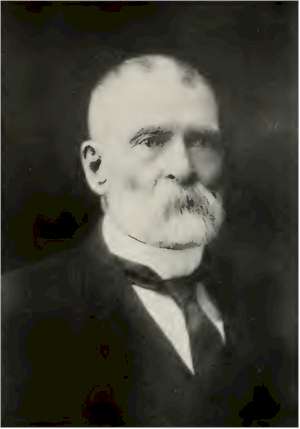
Harkness, Martin
People who
live in the mountain region and on the Pacific slope
occasionally meet an individual wearing in the lapel of his coat
a golden emblem of a bear. Years ago there were hundreds who
wore the golden badge, but the ranks have thinned, the closing
up as a comrade fell has been such that there is but a handful
left, and in a few years later they will be in memory only; for
the wearer of this distinctive badge was an Argonaut. Not one of
those who sailed on the good ship Argo with Jason in search of
the Golden Fleece, but who braved dangers and perils and untold
hardships in voyages around the Horn or across the plains, the
Great American Desert, in search of the yellow metal in
California the Forty-niners.
In Utah there is but one individual
who wears this emblem or who can wear it. That man is Martin
Harkness, pioneer of the gold coast, pioneer of Utah, one of the
class of people who made the great West habitable for millions.
Born at Pelham, Massachusetts, November 19, 1831, educated at
Amherst, he left home in October, 1848, at the age of seventeen,
with an elder brother, for Chicago, at that time a town of
18,500 souls.
While in the Illinois metropolis, as
it was then the metropolis of the West, stories of gold finds on
the Pacific slope found their way East. These stories of the
finds of the yellow metal on the Rio Sacramento and its
tributaries resulted in a fever among many to see the new
Golconda. Martin Harkness and his brother were among the number.
The Mississippi River was the dividing line westward.
Twenty-five hundred miles through a trackless waste, and then
gold. Thousands made the trip around the Horn, and hundreds
crossed the plains. Martin Harkness was of the hundreds.
The journey across the plains was
over the trail from St. Joseph, via Fort Kearney, thence up the
South Platte River to its junction with the North Platte, thence
up that river and the Sweetwater to near its fountain head at
South Pass, then to Fort Bridger, and to Salt Lake. From Zion
over the old Fort Hall trail and down the Humbolt River to Goose
Lake, thence to Lassen ranch on the Sacramento River and the old
Lassen trail. Sixty days was required to reach Salt Lake.
Sixty-one more to the Mecca on the Coast, and then riches no,
just a living.
Twenty years Martin Harkness remained
in the mining region of central and northern California. Then in
1860 he went to Esmeralda County, Nevada, where he resided for
nine years. Then a year was spent in the Puget Sound country,
where he prospected for mineral. In 1870 Mr. Harkness returned
to Salt Lake City, through which city he had passed twenty-two
years before, coming to Zion via the Boise trail, and since then
he has been a prominent figure in Salt Lake.
Mr. Harkness was made a Mason in
California. He now affiliates with the Argenta Lodge of Salt
Lake; is also a member of the Scottish Rite Orient of Salt Lake,
and a thirty-second degree Mason. He has seen Salt Lake City
grow from a hamlet to a magnificent city. He has seen the
development of more than two-thirds of the United States. He is,
at the age of seventy-eight, a hearty, vigorous man.

Index

Source: Sketches of the Inter-Mountain
States, Utah, Idaho and Nevada, Published by The Salt Lake
Tribune, Salt Lake City, Utah, 1909
|

